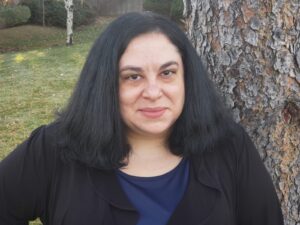
Pedagogies of the Periphery
It has been my experience that some of the most exciting, innovative, life-giving, and life-altering activities occur at the edges of established institutional life. Similar to the generation of new faith communities within denominations that look and feel nothing like their long-standing churches, the peripheries of theological schools often hold some of the most exciting projects, usually called “experiments” by those at the center. (Even further removed from established theological schools themselves, new places of learning and formation are arising that challenge the very existence of the centers of theological education. But that’s a subject for another time.)
I’ve been thinking about this recently in terms of the work of teaching and learning within educational institutions. In dialoguing with a colleague on some of the most pedagogically creative and impactful courses that we as MDiv students took several years ago, we observed that many of them were taught by adjuncts or visiting instructors. Furthermore, in my own praxis of teaching, some of the most compelling tools and resources that I return to again and again have come from talented adjuncts and administrative staff who have taken thoughtful care in their course designs. Such treasures rarely penetrate the course designs of core faculty but have been incredibly formational for students.
For instance, some of the online discussion practices and guidelines that I continue to draw upon and adapt were shared with me by a senior administrator, an adjunct instructor who has spent years developing specialized knowledge around online instructional design. I credit a former staff colleague and senior adjunct lecturer with my now standard use of visual, web-based, interactive infographics for all of my syllabi (designed through Piktochart and linked within a Canvas LMS). Students have found this type of content presentation to be more accessible, organized, and clear in terms of expectations, as well as easier to navigate. For an increasingly diverse learner population in theological education, this small, yet fun-to-create tool has also added an element of playfulness to courses that contain quite serious content (like postcolonial and decolonial theologies).
People on the periphery may have more freedom to experiment beyond the harsher lines that come with being closer to the center. However, with this so-called freedom comes real constraint and injustice. For many, this is due to institutionalized power dynamics that place staff colleagues, adjuncts, and others beyond the core faculty as categorically “less than.” Core faculty privileges in the forms of greater compensation, full-time employment and tenure, more flexible work schedules, and increased access to scholarship and research opportunities certainly exacerbate this center/periphery dynamic. In addition, it might be argued that adjuncts and visiting scholars are more responsive to learning needs because teaching evaluations more readily determine whether they can continue instructing students from term to term.
As someone who is considered an “early-career” scholar and teacher (i.e., newer to theological education yet whose many years of higher education and denominational leadership experience aren’t often recognized in academia), and as one who resides on the border between the center and the periphery as administrative faculty overseeing contextual education, I have spent a lot of time observing colleagues at the center (i.e., well established, tenured associate and full professors who have spent their entire careers in the academy) in order to adapt those elements most fitting to my own teaching and course design. I figured that because they were at the center, they would be doing things that were innovative and more adaptive to student learning needs. While many of them are indeed experimenting in exciting ways, I have concluded that the periphery is where my gaze needs to focus more often than not. As a scholar-practitioner committed to anticolonial pedagogies I should have known better, but the lure of the center can be quite powerful. The center is where acceptance and respect are found, and who doesn’t want to be accepted and respected? The alternative would be to have one’s teaching practices called into question as not rigorous enough, too practical (the horror!), or outright deviant (the delight!).
Where do we situate ourselves in terms of our teaching—at the center or at the periphery, or perhaps in the in-between borderlands? Most binaries fail imaginations greatly but noticing loci of power and pedagogical authority unmasks boundaries so that they might be breached. Institutionally, we may find ourselves in very different roles; but for the collection of individuals who engage in the teaching and learning lives of our respective institutions—adjuncts, scholar-practitioners, practitioner-scholars, lecturers, student support staff, instructional technologists and coders, librarians, field education and Clinical Pastoral Education supervisors, spiritual life leaders and advisors, and core faculty, among others—our vocation is a shared one.
A pedagogy of the periphery requires all of us to be attentive to the edges of institutional and communal life. What is happening in those spaces and places? What are the practices that not only invite innovation to seep into the cracks in the center, but also subvert the very notion of a pedagogical center? How might such practices transform the whole of the institution’s pedagogies and, more importantly, spark the very edges within students?
For many a weary educator, it feels comfortable to stay close to the ways that one knows best, especially after the last two years. But I continue to ask myself whether those ways are the ones that genuinely nurture and challenge students. The periphery is simultaneously terrifying and invigorating, and so I must continue to go/be there and learn.
Leave a Reply